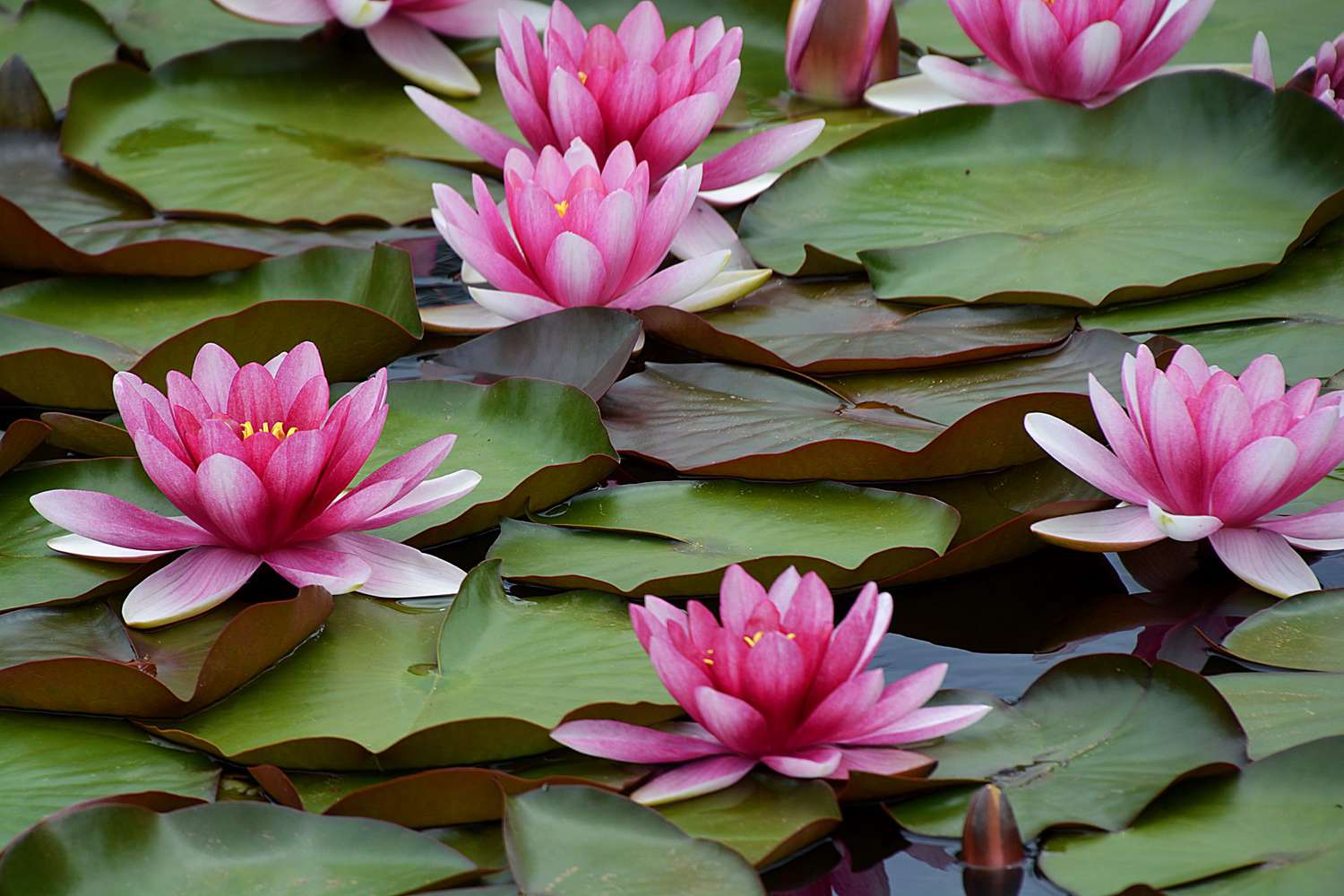Water Lily is a beautiful aquatic plant that can add a touch of elegance to any pond or water feature. However, Water Lillies require proper care and maintenance in order to thrive. In this article, we will discuss some essential water lily care tips to help you keep your water lilies healthy and blooming.
Choosing the Right Location – Water Lily

The first step in caring for a water lily is choosing the right location for it. Water lilies need at least six hours of direct sunlight each day in order to bloom. Make sure to place your water lily in a spot where it will receive ample sunlight. Additionally, water lilies prefer still water, so avoid placing them in areas with strong currents or waterfalls.
Planting the Water Lily
When planting a water lily, it is important to use a container that is at least 12 inches deep and wide. This will allow the plant to grow and spread properly. Fill the container with a mixture of clay and loam soil, and add a layer of gravel on top to prevent the soil from floating away. Gently place the water lily tuber in the soil, making sure the growing tip is facing up. Cover the tuber with a thin layer of soil and gently press it down.
Fertilizing
Water lilies are heavy feeders and require regular fertilization in order to thrive. You can use a slow-release fertilizer specifically designed for aquatic plants, or you can use a general-purpose fertilizer with a 5-10-5 or 10-20-10 ratio. Fertilize your water lily once a month during the growing season, and make sure to follow the instructions on the fertilizer package.
Pond Maintenance

Proper pond maintenance is crucial for the health of your water lilies. Make sure to remove any debris or dead leaves from the pond regularly, as they can cause water quality issues and attract pests. Additionally, keep an eye on the water level and make sure it doesn’t drop too low, as this can cause stress to your water lilies.
Pruning
Pruning is an important part of water lily care. As your water lily grows, it will produce new leaves and flowers. However, old leaves and flowers will also die off and need to be removed. Use sharp scissors or pruning shears to cut off any dead or dying leaves and flowers. This will not only keep your water lily looking neat, but it will also prevent decaying matter from affecting the water quality.
Winter Care
During the winter months, water lilies go dormant and do not require as much care. If you live in a colder climate, you may need to bring your water lily indoors or place it in a heated pond to prevent it from freezing. If you live in a milder climate, you can leave your water lily in the pond, but make sure to remove any dead leaves and debris to prevent them from decaying and affecting the water quality.
Sure! Here are some more tips to help you care for your water lilies and ensure they thrive:
Controlling Algae Growth
Algae can be a common issue in ponds and can negatively affect the health of your water lilies. To control algae growth, it is important to maintain a healthy balance in your pond.
Read Also: Copart Affiliated Third Party Finance Companies
You can do this by adding aquatic plants like water lilies that provide shade and compete with algae for nutrients. Additionally, you can use algaecides or natural treatments like barley straw to keep algae in check.
Water Quality
Maintaining good water quality is essential for the health of your water lilies. Regularly test the water pH, ammonia levels, and nitrate levels to ensure they are within the appropriate range. You can use commercially available test kits to measure these parameters. If necessary, make adjustments to the water chemistry by adding pond additives or using water treatment products.
Protecting from Pests
Pests like snails, insects, and ducks can pose a threat to your water lilies. Snails can eat the leaves and flowers, while insects can lay eggs on the plants. Ducks can also cause damage by uprooting the plants. To protect your water lilies, you can use physical barriers like netting or floating plants to deter pests. Additionally, you can introduce natural predators like fish or frogs that feed on pests.
Dividing and Repotting
Over time, water lilies can outgrow their containers and become crowded. This can affect their growth and flowering. To prevent this, it is important to divide and repot your water lilies every few years. Carefully remove the plant from its container and gently separate the tubers. Replant each tuber in a new container with fresh soil, and trim any excessive roots or leaves. This will allow the plant to continue growing and blooming vigorously.
Regular Maintenance
Regular maintenance is key to keeping your water lilies healthy and beautiful. Inspect the plants regularly for signs of disease or damage, and take prompt action if necessary. Remove any dead or decaying leaves and flowers to maintain good water quality. Additionally, consider adding beneficial bacteria to the pond to help break down organic matter and prevent the accumulation of sludge.
By following these additional tips, you can ensure that your water lilies stay vibrant and flourish in your pond or water feature. If you have any more questions or need further assistance, feel free to ask!
Other Care Tips
- Water Circulation: Ensure that there is proper water circulation in your pond. Stagnant water can lead to the accumulation of debris, algae growth, and poor oxygen levels. Consider adding a fountain or waterfall to promote water movement and oxygenation, which will benefit your water lilies.
- Mulching: Mulching around your water lilies can be beneficial in multiple ways. It helps to conserve moisture, suppress weed growth, and maintain a stable temperature for the roots. Use organic mulch, such as shredded bark or straw, and apply a layer around the base of the plants.
- Temperature Considerations: Water lilies thrive in warm temperatures. If you live in a region with colder winters, you may need to take measures to protect your water lilies from frost. Consider using a floating cover or moving potted plants to a protected indoor location during the winter months.
Read ALso: The Hydrosphere and The Hydrological Cycle
- Deadheading: Regularly remove spent flowers from your water lilies. This practice, known as deadheading, helps to promote continuous blooming and prevents the plant from wasting energy on seed production. Use your fingers or a pair of clean scissors to carefully remove the faded flowers near the base.
- Water pH: Check the pH level of your pond water regularly, as water lilies prefer slightly acidic to neutral conditions. The ideal pH range for water lilies is between 6.5 and 7.5. If the pH is too high or too low, consider using additives or pH-adjusting agents to bring it into the optimal range.
- Overwintering Tuberous Water Lilies: If you have tuberous water lilies, they may need special care during the winter months. In colder climates, lift the tubers from the pond and store them in a frost-free location, such as a basement or garage. Keep them in moist sand or peat moss until the weather warms up in spring.
- Regular Water Changes: Consider replacing a portion of your pond water regularly to maintain optimal water quality. This helps to dilute any buildup of nutrients or chemicals that could be harmful to your water lilies. Aim to replace about 10-20% of the water every month or as needed.
- Pest Control: Keep an eye out for pests like aphids, spider mites, and leafhoppers that can damage your water lilies. Use organic pest control methods such as introducing beneficial insects or using insecticidal soaps to keep these pests at bay. Avoid using harsh chemicals that could harm the delicate balance of your pond ecosystem.
- Avoid Overcrowding: Give your water lilies enough space to grow and spread. If they become overcrowded, it can restrict their growth and flowering. Thin out excessive plants or divide them when necessary to maintain proper spacing and allow each plant to thrive.
- Shade Protection: While water lilies need sunlight to bloom, excessive exposure to intense sunlight can sometimes cause damage. If your pond receives strong sunlight for a significant part of the day, consider providing some shade to protect your water lilies. You can use floating plants or install a shade cloth to provide filtered sunlight and prevent leaf scorching.
- Regular Cleaning: Remove any fallen leaves, debris, or excess plant material from your pond regularly. This helps to maintain good water quality and prevent clogs in your pond filters. A clean and well-maintained pond provides a healthier environment for your water lilies to thrive.
- Monitoring and Adjusting Water Levels: Keep an eye on the water level in your pond, especially during hot and dry periods. Water lilies prefer a consistent water level, so ensure that it doesn’t drop too low. If needed, top up the water to maintain the appropriate level for your water lilies.
- By following these additional tips, you can provide optimal care for your water lilies and create a thriving aquatic environment. If you have any more questions or need further assistance, feel free to ask!
Remember to observe your water lilies regularly and address any issues promptly. With proper care, your water lilies will reward you with beautiful blooms and a stunning addition to your pond or water feature. If you have any more questions or need further assistance, feel free to ask!
By following these water lily care tips, you can ensure that your water lilies will thrive and add beauty to your pond or water feature. Do you have any other tips for caring for water lilies? Let us know in the comments.
Read Also: Dave Ramsey’s Foundations in Personal Finance
